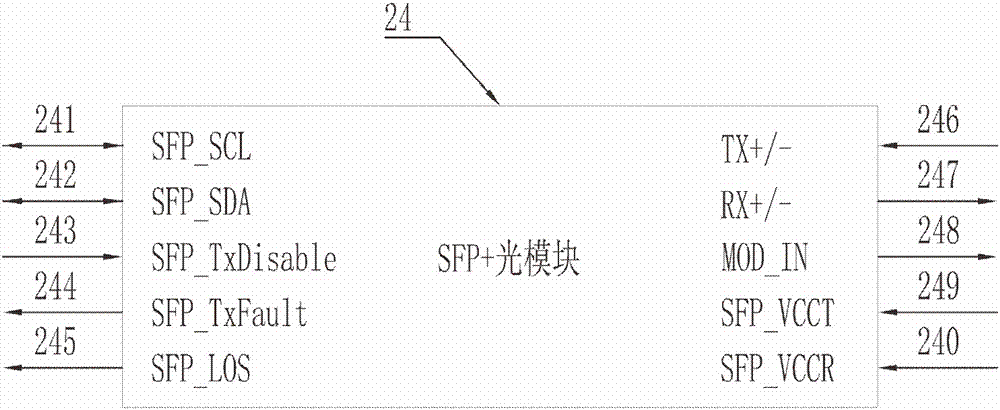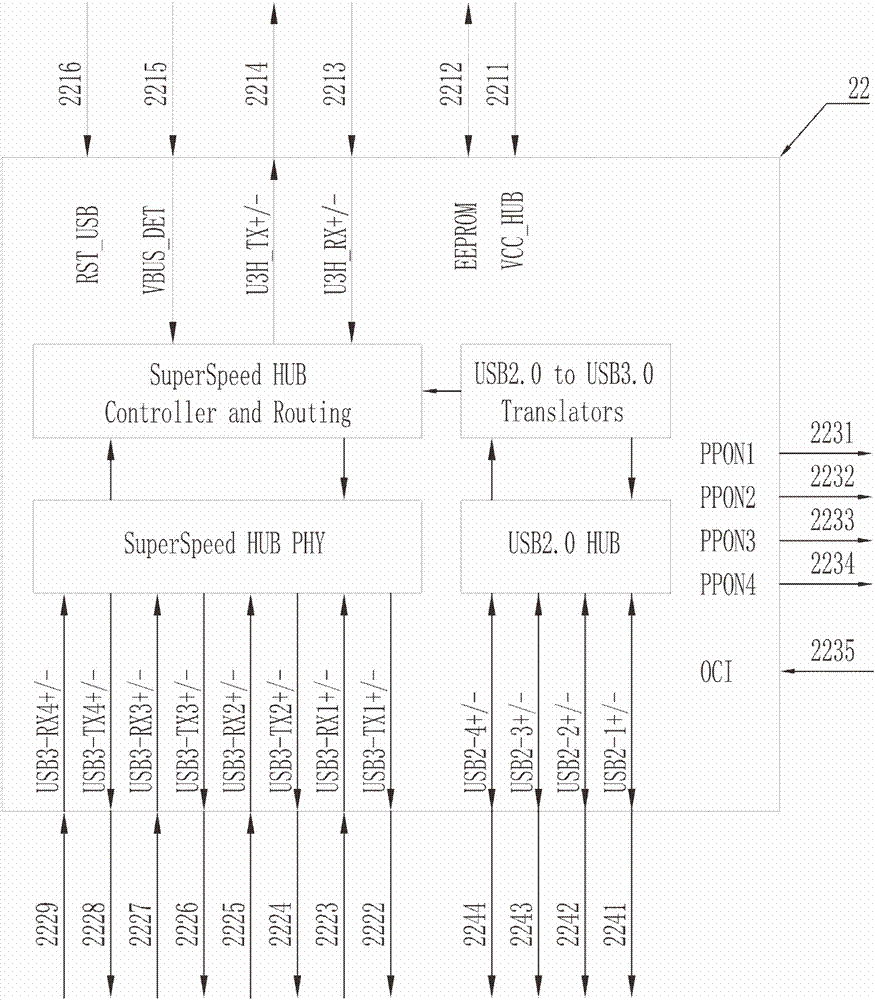USB3.0 optical fiber expansion card based on PCI-E
A USB2.0, PCI-E technology, applied in optical fiber transmission, instruments, electrical digital data processing, etc., can solve problems such as electromagnetic interference, data security cannot be guaranteed, and USB3.0 standard terminal equipment cannot be connected.
- Summary
- Abstract
- Description
- Claims
- Application Information
AI Technical Summary
Problems solved by technology
Method used
Image
Examples
Embodiment Construction
[0064] In order to better understand the present invention, the present invention will be further described below in conjunction with the accompanying drawings and embodiments. It should be understood that the specific embodiments described here are only used to explain the present invention, but not to limit the present invention. In addition, it should be noted that, for the convenience of description, only some parts related to the present invention are shown in the drawings but not all circuit structures.
[0065] The present invention is a PCI-E-based USB3.0 optical fiber expansion card and USB3.0 optical fiber receiving end; the system application principle block diagram is as follows figure 1 As shown, one end of the USB3.0 fiber optic expansion card S2 is connected to the PCI-E bus S1 of the host computer, and the other end is connected to the USB3.0 optical fiber receiving end S3 through an optical fiber; the downlink interface of the USB3.0 optical fiber receiving e...
PUM
 Login to View More
Login to View More Abstract
Description
Claims
Application Information
 Login to View More
Login to View More - R&D
- Intellectual Property
- Life Sciences
- Materials
- Tech Scout
- Unparalleled Data Quality
- Higher Quality Content
- 60% Fewer Hallucinations
Browse by: Latest US Patents, China's latest patents, Technical Efficacy Thesaurus, Application Domain, Technology Topic, Popular Technical Reports.
© 2025 PatSnap. All rights reserved.Legal|Privacy policy|Modern Slavery Act Transparency Statement|Sitemap|About US| Contact US: help@patsnap.com



